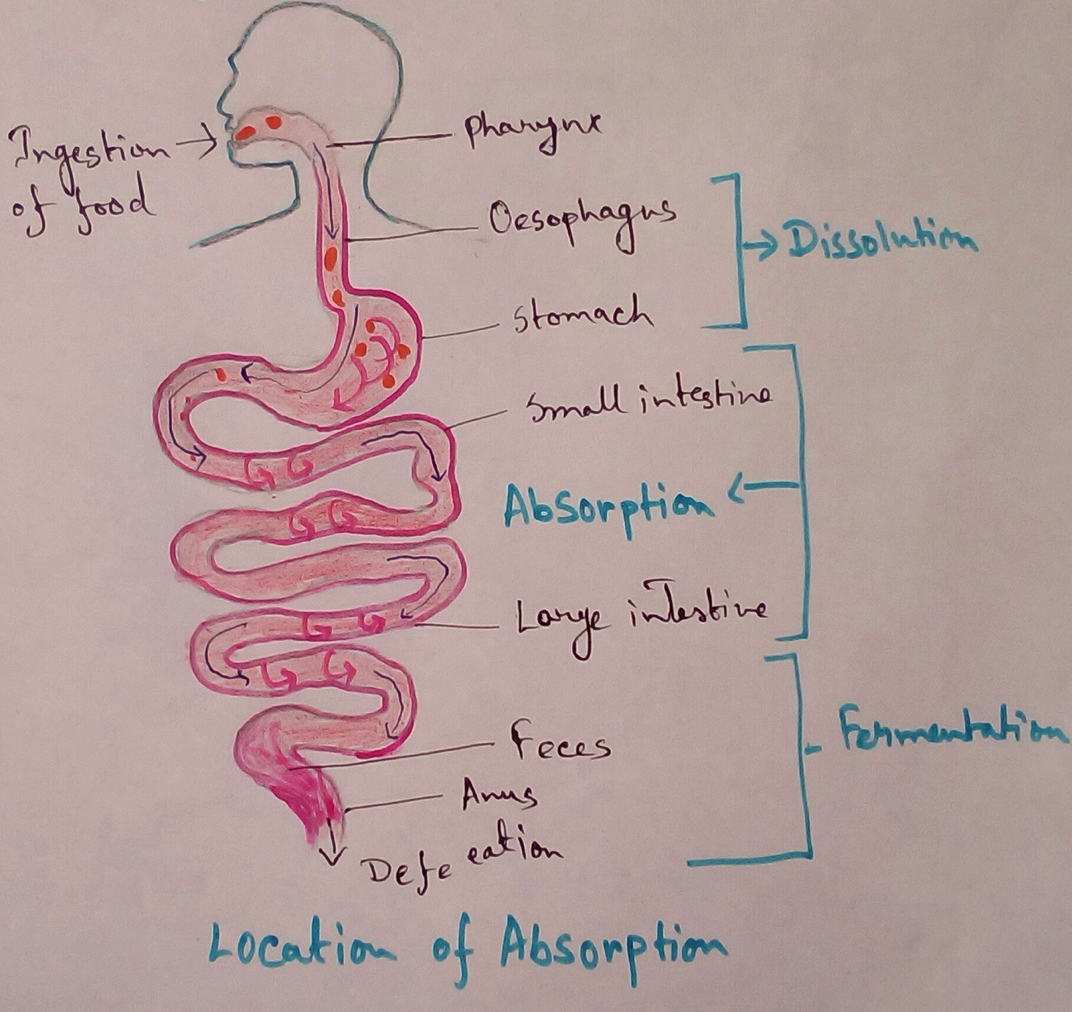Absorption of Digested Products
Food and water is observed in different parts of the body and is distributed in different cells and tissues. Absorption of food is observed to be observed in the small intestine in the specific type of cell which is allotted for the absorption are called the villi and lacteal. Food contains different basic components like a - it's simple sober like glucose, Fructose, minerals vitamins which are absorbed through the delight and after the absorption these nutrients Park then reach the blood capillaries and then they are able to finally enters into the blood circulation which is letter distributed to the whole body parts.
Fatty acids and glycerol are observed to be observing the luckier laureline visit in order to enter the lymphatic system.
Small intestine is associated with the help in the digestion and absorption of digested food as it is consists of a line with finger like projections called be like that help in absorption the food by increasing surface area of the absorption. The small intestine can be further subdivided into duodenum, jejunum and ileum.
Large intestine is a largedance small intestine where no digestion takes place but only the absorption of water is observed to be takes place. Removal of the undigested food is also a major role of large intestine.
Absorption of Water - In large intestine water is observed and undigested food is released from the body as the form of Pieces which is before stored in the rectum during release outside from the body. Actually the undigested part of the food which comes from small intestine and entered the large intestine there they gone through some reactions which done by the some bacteria that is present inside the large intestine and their synthesis some vitamin minerals also make the undigested food fermented. During this reaction these bacteria are also responsible for producing some gases like Hydrogen sulphide etc in the large intestine.
Nephrons the Unit of Kidney - Nephron is associated with the absorption of water and different minerals vitamins amino acids monosaccharides glucose etc. There is a part of nephron which is the last part and is called collecting that where the ultimate Lee processing of urine concentration take place. Is there is water concentration more in the collecting duct then it is observed by the collecting duct and it controls the concentration of the urine.
Glucose is used as a Substrate for Respiration - Foods are broken down into different smaller particles and you need for these are used as the substrate for respiration. As we know that substrate is the glucose and for most cases it reduced to carbon dioxide and water by releasing the energy which was stored as chemical energy within the food.
Amino acids are used for synthesis of proteins- amino acids at the basic unit of the protein which are associated to perform different polypeptides and letter different protein molecules. As we all know that there are different proteins for formation of enzyme hormone different biomolecules inside our body so due to digestion and absorption of food amino acid molecules are produced beach again associated together to form different protein molecules without which life cannot be possible.
Fatty Acids and Glycerol Change - Another food component is fat molecules or liquid molecules recharge formed into fatty acid molecules and glycerol.
Fats are used for the Formation of Cell Membrane - Leopard is very essential component for the formation of trilaminar membrane or cell membrane.
Excess Sugar Storage at Liver - Excess sugar converted into glycogen and stored in to liver.
From Explain Digestion of Food to HOME PAGE
Recent Articles
-
What Is Plasma? | Blood Plasma | Proteins | Nutrients | Cholesterol
Nov 07, 25 10:29 AM
Blood is a mobile fluid which is a connective tissue and is derived from the mesoderm like cell any other connective tissue. Colour of blood is reddish and that flows inside the blood vessels by means… -
Disorders of Respiratory System | Tuberculosis | Pleurisy | Emphysema
Oct 28, 25 11:39 PM
Tuberculosis is very common disease and is caused by a type of bacteria called Mycobacterium tuberculosis. This disease causes different trouble in the respiration and infection of several parts of th… -
Regulation of Respiration | Respiratory Centres | Inspiratory Area |
Oct 14, 25 12:13 AM
Respiratory Centre is the area that controls the rate of respiration and it is observed to be located in medulla oblongata and pons. Respiratory Centre has the following will dispersed components like… -
Explain Transport of Gases | External Respiration | Tissue Respiration
Oct 09, 25 11:35 PM
In humans gaseous exchange is completed in the following ways the steps are - External Respiration or Breathing - Breathing in false taking in of Oxygen and giving out of carbon dioxide in the body. M… -
Kind and Number of Teeth | Location of Teeth in Mouth | Care of Teeth
Sep 11, 25 12:52 AM
Kind and Number of Teeth







New! Comments
Have your say about what you just read! Leave me a comment in the box below.